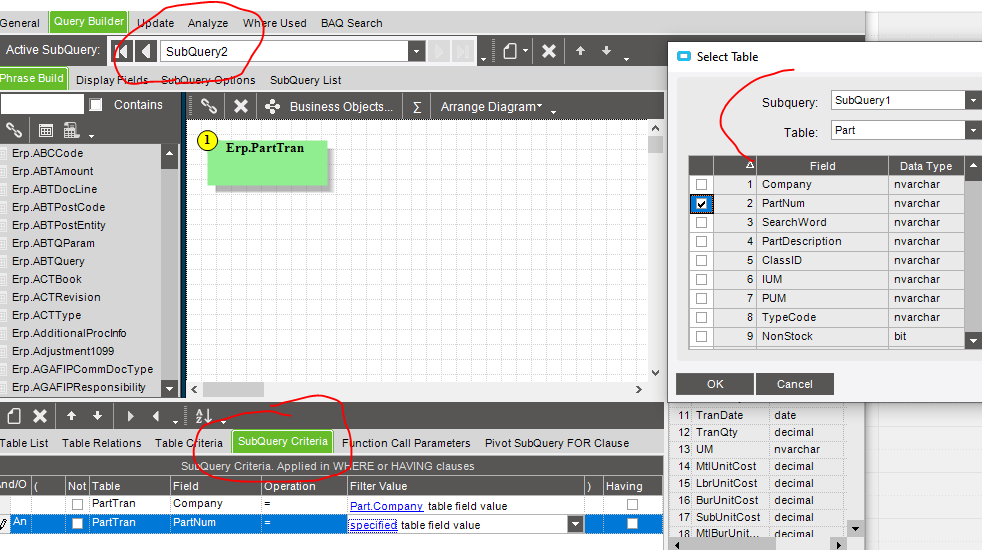@tmcmullen you can also do Sub-Select SubQuery.
Then you wouldnt need to do GROUP BY on your Top-Query.
In a Nutshell:
- Make a Sub-Query but DO NOT Use it on the Designer
- On your TopLevel Query add the Sub-Query to a Calculated Field
- On the Sub-Query under SubQuery Criteria you can add WHERE Clause.
Example:
SubQuery1:
SubQuery2:
Result:

Basically in a simpler view it does
SELECT (SELECT count(*) FROM table WHERe...) as YourCalculatedColumn
It is proven that JOINs are usually faster and sometimes SQL will even convert your SUB-SELECT when it can, but if you get into a more complex scenario where you are getting tangled in Sub-Queries, GROUPS, etc… sometimes Sub-Selects work easier. FYI  thought Id share something.
thought Id share something.
The best time they work is when you need to get let’s say The Last Approved Revision nothing easier than a SubSelect and then Order By ApprovedDate DESC, but when not using Aggregate like count(*) then you must make sure you set your SubQuery2 to return only 1 row, 1 column.





